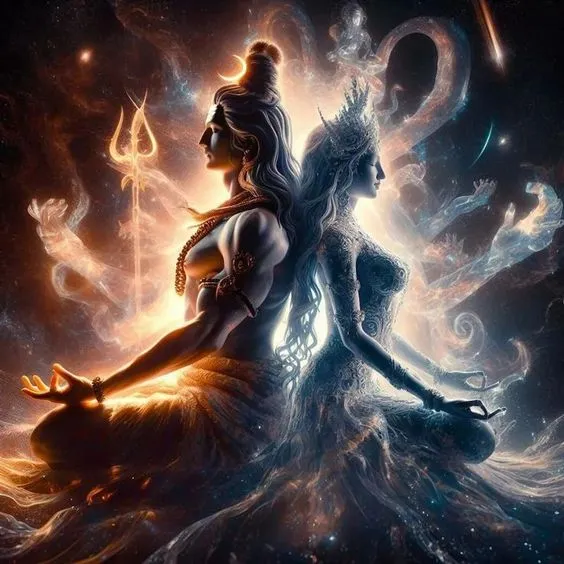
The story begins with Sati, the daughter of Dakshaprajapati, who deeply loves Shiva. But Daksha was not on good terms with Shiva due to past events, so he always opposed the marriage of Shiva and Sati. Despite her father’s disapproval, Sati chooses to marry Shiva, inciting Dakshaprajapati’s wrath.
In retaliation, Dakshaprajapati organizes a grand sacrificial ritual, deliberately excluding Shiva from the festivities. Driven by an urge to see her family, Sati pleaded with Shiva to allow her to attend the ceremony.
At the Yaga, the atmosphere turned opposite to what she expected. Daksha, blinded by his anger for Shiva, showered insults upon his son-in-law. Unable to bear the disrespect towards her husband, Sati decided to sacrifice herself to the fire.
Sitting on the ground, facing north, Sati meditated on Lord Shiva’s lotus feet, purifying herself of all sins. She then performed a mystic yoga process and channeled the fiery elements within her body. In a blaze of fire, Sati gave up her body and left the mortal world.

News of Sati’s self-sacrifice reached Shiva, who was plunged into a state of inconsolable rage. Shiva, distraught by Sati’s sacrifice, embarks on a cosmic dance of destruction, known as the Tandava.
As he whirls across the universe, Sati’s burnt remains scatter, creating holy sites known as Shakti Peethas. Meanwhile, Shiva retreats into deep meditation in the Himalayas, consumed by grief which causes a lot of imbalance in the universe.
To restore balance, Sati is reborn as Parvati, a committed yogini determined to win Shiva’s heart. Through intense austerity and devotion, she impresses Shiva, culminating in their union. This sacred union of Shiva and Parvati signifies the integration of consciousness and energy, a core principle in yoga.
Shivaratri: A Night for Yogic Transformation
The legend behind Shivaratri holds profound meaning for yogis. It is believed that on the eve of Shivaratri, Shiva, in the form of Adiyogi, the first yogi, imparted the secrets of yoga to Parvati for the first time. This signifies the transfer of yogic knowledge and the importance of self-discipline and dedication in achieving enlightenment.
The Scientific Significance: Aligning with Nature’s Rhythms
Shivaratri often coincides with the new moon, the darkest night of the lunar cycle. This alignment has a scientific basis. According to yogic science, the human body is a microcosm of the universe, mirroring its rhythms.
On this night, the natural pull of the moon is strongest, creating an opportune time for inward reflection and practices like meditation.
Keeping our spine straight is especially important on the night of Shivaratri as your spine acts as an antenna and establishes connections between you and the cosmos.
Celebrating Shivaratri: A Yogic Approach
Here are some practices you can incorporate to make your Shivaratri a truly yogic experience:
- Observing a Fast: Abstaining from food or consuming simple, sattvic meals allows the body to rest and redirects energy inwards. Also, the main reason for fasting is to keep ourselves awake in the night.
- Practicing Yoga: Pranayama (breathwork), and meditation are particularly potent during this time. The stillness of the night enhances your ability to go deeper within.
- Staying Awake: The night holds a special energy conducive to introspection and spiritual growth. Consider meditating, chanting mantras, or reading scriptures.
The Symbolism of Shiva and Yoga
Shiva’s form itself embodies yogic principles. The trident (trishul) he carries represents the three major nadis (energy channels) in the body — Ida, Pingala, and Sushumna. The coiled serpent around his neck signifies the dormant Kundalini energy, awakened through yogic practices. The moon on his head symbolizes the shakti, which is a very important part of yoga.
Conclusion: A Night of Transformation
Shivaratri transcends mere festivity. It’s a call to action, urging us to do yogic practices and cultivate the union of Shiva and Shakti within ourselves. Through this inner dance, we can achieve the ultimate goal of yoga — liberation and self-realization.
So, this Shivaratri, embark on a yogic journey, delve deeper into your practice, and experience the transformative power of this sacred night.